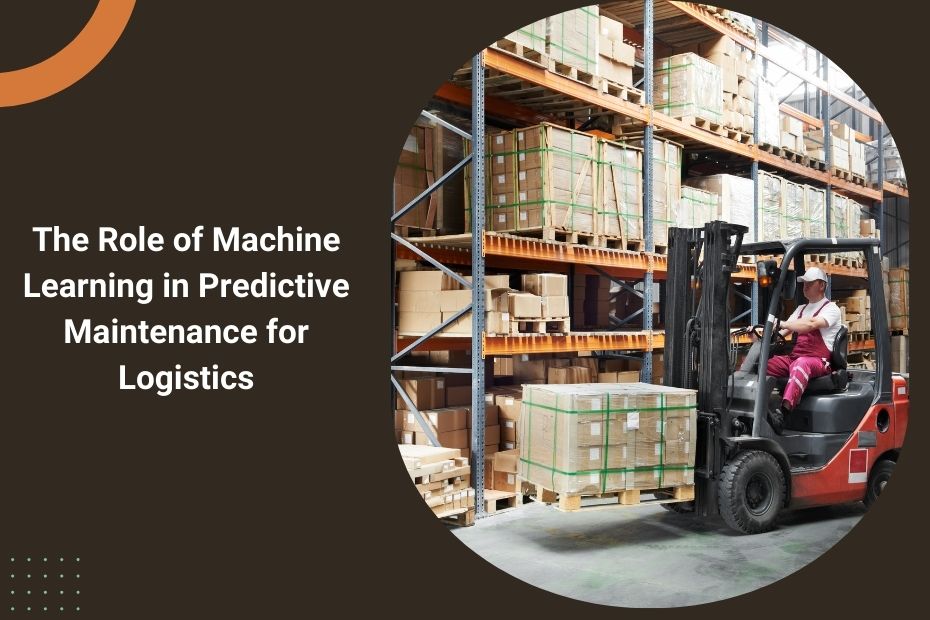In the logistics industry, keeping equipment and vehicles operational is essential to meet deadlines, control costs, and ensure safety. Equipment breakdowns or unexpected downtime can lead to missed deliveries, increased costs, and even safety risks. Predictive maintenance, powered by machine learning, addresses these issues by enabling companies to detect early signs of equipment failure. This proactive approach allows businesses to perform maintenance only when necessary, preventing downtime and controlling costs. With experience in logistics and maintenance strategies, I’ve witnessed the transformative impact of machine learning on predictive maintenance. Here, I’ll explore how machine learning supports predictive maintenance and why it’s essential for logistics.
How Machine Learning Powers Predictive Maintenance
Machine learning enhances predictive maintenance by analyzing vast amounts of data to predict equipment issues before they happen. This process involves gathering data from sensors on equipment, such as temperature, vibration, pressure, and usage history. Machine learning algorithms process this data to identify patterns that suggest when a component might fail.
Consider a fleet of trucks, each equipped with sensors to monitor engine temperature, brake condition, and tire pressure. Machine learning algorithms analyze this data continuously, learning to recognize signs of degradation or wear. Once a potential issue is detected, the system sends an alert, allowing technicians to address it before it causes a breakdown. By using machine learning to detect early warning signs, predictive maintenance reduces unexpected failures, minimizes repair costs, and keeps logistics operations running smoothly.
Key Benefits of Machine Learning in Predictive Maintenance
Machine learning brings several benefits to predictive maintenance in logistics, making it a valuable tool for managing equipment and preventing disruptions. First, predictive maintenance significantly reduces downtime. By knowing in advance when a component might fail, logistics teams can schedule maintenance at convenient times, ensuring equipment remains operational during peak demand.
Another benefit is cost efficiency. Traditional maintenance approaches often lead to over-maintenance or costly emergency repairs. Machine learning-based predictive maintenance, however, allows for repairs only when needed, reducing labor and material costs. Additionally, predictive maintenance extends equipment life by preventing unnecessary wear from excessive maintenance. This approach ensures that equipment is only serviced when necessary, reducing the frequency of replacements and saving resources.
Safety is another critical advantage. Well-maintained equipment is less likely to fail, which reduces the risk of accidents and ensures a safe work environment. Finally, machine learning provides logistics managers with data-driven insights, helping them make informed decisions about equipment usage, budgeting, and fleet management. By providing actionable information, machine learning makes predictive maintenance a strategic asset in logistics.
Steps for Implementing Machine Learning in Predictive Maintenance
Introducing machine learning for predictive maintenance in logistics requires careful planning and execution. The first step is data collection. Quality data is essential for accurate predictions, so businesses should gather data from reliable sensors on equipment, recording parameters like temperature, vibration, fuel efficiency, and historical maintenance.
The next step is data cleaning and preparation. Raw data often contains inconsistencies or missing values, so cleaning the data improves model accuracy. Organized, consistent data ensures that the machine learning model can detect patterns effectively. Once data is ready, the model can be trained to recognize failure patterns. Supervised learning, which involves labeling data to teach the model, is often used here. Testing the model on new data verifies its accuracy, ensuring it can predict issues effectively.
After model training, integration with maintenance management systems is essential. Predictive models should connect seamlessly with existing maintenance software, so alerts go directly to the team responsible for repairs. This integration allows for quick, efficient responses to maintenance needs. Finally, continuous monitoring and improvement keep the model accurate over time. Regular updates help the model adapt to changing equipment conditions, maintaining predictive accuracy.
Challenges of Implementing Machine Learning in Predictive Maintenance
While machine learning offers clear benefits for predictive maintenance, implementing it in logistics comes with challenges. One common issue is data quality. Machine learning models require accurate data to function effectively, so faulty sensors or inconsistent data collection can lead to unreliable predictions. Investing in high-quality sensors and regular calibration can mitigate this issue, ensuring the data feeding the model is reliable.
Integration with legacy systems is another challenge. Many logistics companies rely on older equipment and systems that may not be compatible with modern machine learning tools. Integrating predictive maintenance models with these legacy systems often requires additional software solutions or system upgrades, which can add complexity to the process.
Additionally, predictive maintenance requires specialized skills. Machine learning models need experts who understand both the technology and the specifics of the equipment being maintained. Training current staff or hiring data professionals can bridge this gap, ensuring the team has the skills needed to develop, deploy, and monitor predictive models. Addressing these challenges early in the implementation process helps logistics companies maximize the value of machine learning in predictive maintenance.
Practical Applications of Predictive Maintenance in Logistics
Predictive maintenance has numerous applications across the logistics industry, with machine learning-driven insights supporting various types of equipment and operations. In fleet management, for example, predictive maintenance helps monitor vehicle health, predicting issues like engine wear, brake deterioration, and tire damage. By detecting these issues early, companies can keep vehicles on the road longer and avoid costly repairs.
Warehouse equipment also benefits from predictive maintenance. Machinery like forklifts, conveyor belts, and sorting systems undergo constant use, which makes them prone to wear. Machine learning algorithms analyze usage patterns and component conditions, predicting when parts need replacement. This ensures that equipment operates smoothly, reducing downtime in busy warehouses.
Cold chain logistics is another area where predictive maintenance adds value. Refrigerated transportation requires consistent temperatures to prevent spoilage. Predictive maintenance monitors cooling systems, identifying signs of failure in components like compressors and fans. By ensuring refrigeration units stay functional, predictive maintenance protects perishable goods and maintains product quality. These applications demonstrate how predictive maintenance helps logistics companies maintain reliability and efficiency.
The Future of Predictive Maintenance in Logistics
As technology advances, predictive maintenance in logistics will continue to improve, driven by new developments in machine learning and data availability. The Internet of Things (IoT) is one area with significant potential to enhance predictive maintenance. IoT sensors embedded in equipment provide real-time data, which machine learning models use to detect potential issues with even greater accuracy. This constant data stream enables predictive maintenance systems to monitor equipment conditions continuously, reducing the risk of sudden failures.
Additionally, advancements in artificial intelligence are pushing predictive maintenance to new levels of sophistication. Deep learning algorithms, in particular, can process vast amounts of data and detect complex patterns that traditional models might miss. With deep learning, predictive models can make highly accurate predictions about equipment health, helping logistics companies avoid disruptions. As machine learning continues to evolve, predictive maintenance will become even more effective, making it an essential part of modern logistics operations.
Key Benefits of Machine Learning in Predictive Maintenance for Logistics
- Reduces equipment downtime with early failure detection
- Lowers maintenance costs by preventing emergency repairs
- Extends equipment lifespan through targeted maintenance
- Improves safety by minimizing breakdowns
- Provides data-driven insights for informed decisions
In Conclusion
Machine learning has revolutionized predictive maintenance, offering logistics companies a forward-looking approach to reduce downtime, control costs, and improve safety. By analyzing data from equipment in real-time, machine learning models provide accurate insights that allow maintenance teams to address issues before they become serious problems. While implementing machine learning in predictive maintenance involves challenges, such as data quality, integration with legacy systems, and skill requirements, the benefits make it a valuable investment for any logistics business. As machine learning and IoT technologies continue to develop, predictive maintenance will become an even more powerful tool, helping logistics companies optimize operations and achieve long-term success.










